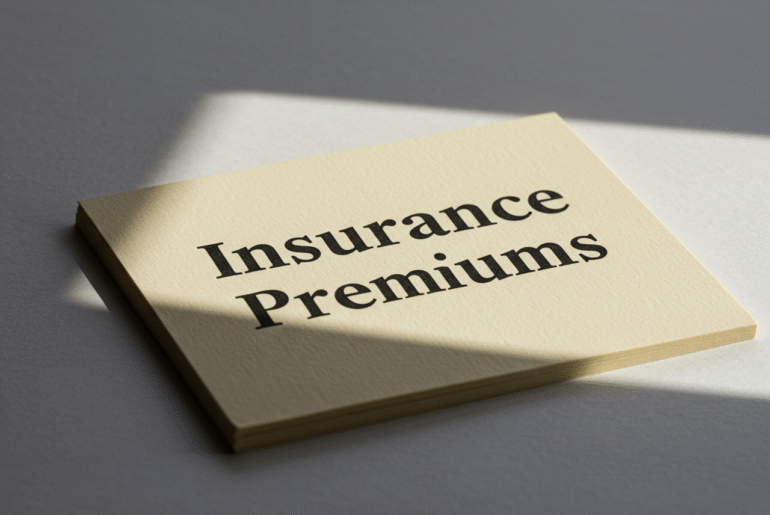This article may contain references to products or services from one or more of our advertisers or partners. We may receive compensation when you click on links to those products or services. Nonetheless, our opinions are our own.
The information presented in this article is accurate to the best of our knowledge at the time of publication. However, information is subject to change, and no guarantees are made about the continued accuracy or completeness of this content after its publication date.
When managing your finances, insurance is one of the most important yet often overlooked expenses. You might be surprised to learn how much the average person pays for various types of insurance, from health and auto to home and life. Understanding the costs associated with these essential coverages is vital for budgeting and financial planning. This guide breaks down the average expenditures and explores the factors influencing insurance premiums. Whether shopping for a new policy or simply curious about your payments, this guide helps you gain insights into the costs. It empowers you to make informed decisions about your financial future.
Understanding the Different Types of Insurance You Need
When securing your financial future, understanding the types of insurance you need is essential. Breaking it down can make it more manageable. Here are the key types of insurance to consider:
- Health Insurance: Essential for covering medical expenses, routine check-ups, and unexpected illnesses. Without it, a single hospital visit could lead to significant debt.
- Auto Insurance: Required if you own a car. It protects you from financial losses related to accidents, theft, or damage.
- Homeowners or Renters’ Insurance: If you own a home or rent, this insurance safeguards your possessions against theft, fire, and other disasters.
- Life insurance: vital if you have dependents. It ensures their financial security in the event of your passing.
- Disability Insurance: Provides income if you cannot work due to an injury or illness, helping you maintain your standard of living.
Understanding the premium costs associated with each type can help you budget effectively. Here’s a concise overview of average insurance costs:
| Insurance Type | Average Annual Cost |
|---|---|
| Health Insurance | $7,740 |
| Auto Insurance | $1,500 |
| Homeowners Insurance | $1,500 |
| Life Insurance | $1,200 |
| Disability Insurance | $1,200 |
By becoming familiar with these types and their associated costs, you can make informed decisions that protect your assets and peace of mind.
Breaking Down the Average Costs You Can Expect
Several factors can influence the costs you might anticipate, from the type of coverage you choose to personal factors like your age and location. Here’s a breakdown of some key insurance categories and their typical price ranges:
- Health Insurance: Depending on your plan and coverage level, monthly premiums can range from $200 to $600. High-deductible plans may offer lower premiums but come with higher out-of-pocket costs.
- Auto Insurance: On average, you might pay between $100 and $200 monthly. However, factors like your driving history and the type of vehicle you own can substantially alter this amount.
- Homeowners Insurance: This can typically cost between $800 and $2,000 annually, largely influenced by your home’s value, location, and any additional coverage options you select.
- Life Insurance: Premiums for term life policies can vary widely, ranging from $20 to $100 a month. Factors such as age and health status play a significant role in determining your rate.
| Insurance Type | Average Monthly Cost |
|---|---|
| Health Insurance | $200-$600 |
| Auto Insurance | $100-$200 |
| Homeowners Insurance | $67 – $167 |
| Life Insurance | $20 – $100 |
When reviewing these costs, you should seek quotes from multiple providers to ensure you find the best rates tailored to your needs. Understanding these averages helps you plan your finances effectively, ensuring you’re adequately protected without overspending.
Several key factors can influence the amount you pay for insurance premiums. Understanding these elements can help you make informed decisions and potentially save money. Here are some significant considerations:
- Your Location: Where you live can affect your premiums due to regional risks. Areas prone to natural disasters or high crime rates may incur higher costs.
- Your Claims History: If you’ve made multiple claims in the past, insurers may view you as a higher risk, leading to increased premiums.
- Your Credit Score: Many insurers consider your credit score when determining your premiums. A higher score often leads to lower rates, as it suggests reliability.
- Type of Coverage: The extent of your coverage impacts your premium. Comprehensive plans offer more benefits but typically come at a higher cost.
- Your Deductible: Choosing a higher deductible can lower your premium, but you’ll pay more out-of-pocket if you file a claim.
| Factor | Effect on Premium |
|---|---|
| Location (High-Risk Area) | Higher Premium |
| Multiple Claims | Higher Premium |
| Good Credit Score | Lower Premium |
| Extensive Coverage | Higher Premium |
| Higher Deductible | Lower Premium |
Knowing these factors helps you negotiate better rates or make changes to reduce your insurance costs. Savvy financial management includes understanding the elements that shape your premiums.
Practical Tips for Finding the Best Insurance Rates
Finding the right insurance at the best rates can be overwhelming. Simplify your search with these practical tips:
- Compare Quotes: Always compare quotes from multiple providers. A simple change in coverage limits or deductibles can lead to substantial savings.
- Bundle Policies: Consider bundling your auto, home, or life insurance with the same company. Many insurers offer lower premiums for bundled policies.
- Review Coverage Regularly: Life changes, such as moving, marriage, or a growing family, can affect your risk profile and premiums. Adjust your policies as needed.
- Adjust Your Deductible: Although it might seem counterintuitive, raising your deductible can result in lower premiums. Here’s how different deductibles affect monthly payments:
| Deductible Amount | Monthly Premium Estimate |
|---|---|
| $500 | $120 |
| $1,000 | $100 |
| $1,500 | $85 |
Additionally, keep an eye on your credit score. Insurers often use it to determine premiums, so improving it can help lower your rates. By following these tips, you can proactively find the best insurance rates.
How to Evaluate Your Coverage Options Effectively
When evaluating insurance coverage, list your needs: consider your assets, liabilities, and personal circumstances. This will help you determine which types of insurance are essential. For example, homeowners may prioritize homeowners’ insurance, while renters should focus on renters’ insurance.
Seek out multiple quotes to compare rates and coverage details. Be sure to check for hidden exclusions or differences in deductibles. Here’s a breakdown of typical monthly premiums across different insurance types:
| Type of Insurance | Average Monthly Premium |
|---|---|
| Health Insurance | $400 |
| Auto Insurance | $120 |
| Homeowners Insurance | $100 |
| Renter’s Insurance | $25 |
Also, assess the claims process. A policy with low premiums isn’t valuable if the claim process is complicated. Evaluating your coverage options carefully ensures you’re fully protected at a price that fits your budget.
Empowering Yourself to Take Control of Your Insurance Expenses
Taking control of your insurance expenses may feel overwhelming, but you can make informed decisions with the right approach. Start by reviewing your current policies and assessing which coverage you truly need. Ask yourself the following:
- Are you paying for coverage you rarely use?
- Have your circumstances changed, such as a new job, marriage, or growing family?
- Could you increase your deductibles to lower your premiums?
Explore options by shopping around for better rates, as insurance companies adjust pricing frequently. Here’s a comparison of average monthly costs:
| Type of Insurance | Average Monthly Cost |
|---|---|
| Health Insurance | $450 |
| Auto Insurance | $150 |
| Homeowners Insurance | $100 |
| Life Insurance | $50 |
By actively managing your insurance expenses, you can streamline your budget and free up funds for savings and investments. Taking small steps can lead to significant financial improvements.
Voted "Best Overall Budgeting App" by Forbes and WSJ
Monarch Money helps you budget, track spending, set goals, and plan your financial future—all in one app.
Get 50% OFF your first year with code MONARCHVIP
Conclusion: Take Charge of Your Insurance Strategy
Understanding and managing your insurance costs is vital to achieving financial stability. By breaking down average premiums, identifying the factors that influence pricing, and learning how to compare and adjust your coverage, you can take greater control of your monthly budget and long-term financial health. Insurance isn’t just a necessary expense—it’s a powerful tool for protecting what matters most. With the proper knowledge and proactive planning, you can secure the coverage you need without overpaying. Use this guide as a starting point to evaluate your policies, explore better options, and make confident, informed decisions about your insurance future.
Frequently Asked Questions
What types of insurance do most people have?
Most people have several types of insurance, including health, auto, homeowners’ or renters’ insurance, and life insurance. Depending on their needs, many also consider disability or pet insurance.
How much do people typically spend on health insurance?
Health insurance costs vary based on location, age, and employment status. On average, individuals may pay several hundred dollars each month, especially if they purchase coverage through the private market.
What is the average cost of auto insurance?
Auto insurance costs vary by state and personal circumstances. On average, people pay around $1,000 to $1,500 annually, but this can change based on factors like driving history, vehicle type, and coverage options.
How much do homeowners’ or renters’ insurance policies cost?
Homeowners’ insurance typically averages between $700 and $1,200 per year, while renters’ insurance is usually cheaper, averaging about $180 annually. The cost depends on location, value, and coverage level.

Reviewed and edited by Albert Fang.
See a typo or want to suggest an edit/revision to the content? Use the contact us form to provide feedback.
At FangWallet, we value editorial integrity and open collaboration in curating quality content for readers to enjoy. Much appreciated for the assist.
Did you like our article and find it insightful? We encourage sharing the article link with family and friends to benefit as well - better yet, sharing on social media. Thank you for the support! 🍉
Article Title: How to Save on Insurance Premiums: Manage Costs for Health, Auto, and Home
https://fangwallet.com/2025/05/06/save-on-insurance-premiums/The FangWallet Promise
FangWallet is an editorially independent resource - founded on breaking down challenging financial concepts for anyone to understand since 2014. While we adhere to editorial integrity, note that this post may contain references to products from our partners.
The FangWallet promise is always to have your best interest in mind and be transparent and honest about the financial picture.
Become an Insider

Subscribe to get a free daily budget planner printable to help get your money on track!
Make passive money the right way. No spam.
Editorial Disclaimer: The editorial content on this page is not provided by any of the companies mentioned. The opinions expressed here are the author's alone.
The content of this website is for informational purposes only and does not represent investment advice, or an offer or solicitation to buy or sell any security, investment, or product. Investors are encouraged to do their own due diligence, and, if necessary, consult professional advising before making any investment decisions. Investing involves a high degree of risk, and financial losses may occur including the potential loss of principal.
Source Citation References:
+ Inspo
There are no additional citations or references to note for this article at this time.












































